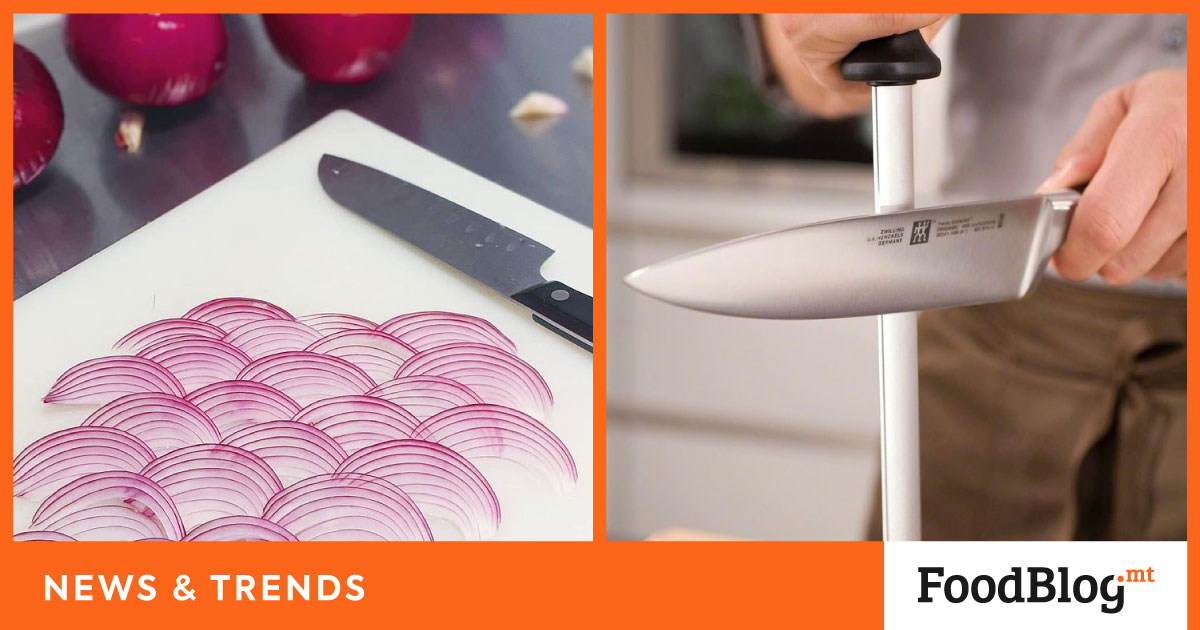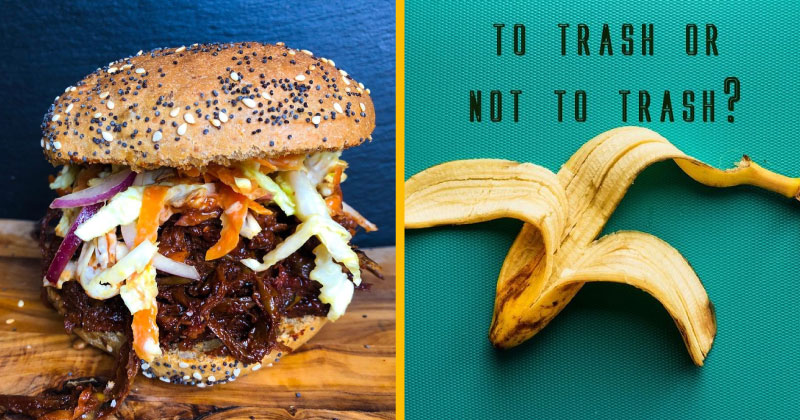The FoodBlog Guide: Kitchen Knives 🔪

You can’t really cook a meal without whipping out a knife at least once. Knives are an essential cooking tool, used for various tasks in the kitchen. Knowledge about the different knives, how to use them, and how to take care of them are a key ingredient to making you a better home cook. So let’s go through some things you must know about kitchen knives:
The Essentials 🍴
Most sources agree that there are pretty much 3 knives that are essential in any kitchen:
1. Chef’s Knife
The all-around tool for your kitchen tasks, the chef’s knife can do almost anything. The only things it should not be used for are carving meat and removing the skin from large vegetables, as these are better suited for smaller knives.
2. Paring Knife
This is essential for getting around fruit skin, seeds and piths, and slicing or mincing small vegetables. This knife shouldn’t be used for harder ingredients.
3. Serrated Knife
Whilst this is also called a bread knife, its uses go far beyond bread: think difficult, slippery or waxy surfaces that would give trouble to a chef’s knife. It’s also great for cutting cake layers, and should only be used for slicing (not chopping).
Other good picks are boning/carving knives, which are great for carving meat around bones and cartilage; the cleaver knife, which is strong enough to cut through bones; and santoku knives, great for slicing, dicing and mincing. 👌
Keep it sharp 🪒
What’s a knife worth if it’s not sharp? 🤔
Honing is a practice that allows you to realign the fibres on your knife’s blade to keep it from going blunt. Another essential tool to add to your kitchen along with your 3 knives, a honing rod is a piece of steel which you can run your blades against as often as you like to keep them at peak sharpness for as long as possible. Honing can be done on all knives apart from serrated ones due to their jagged edge.
However, honing is not the same as sharpening, and you’ll still need to sharpen your knives every now and then. Whilst honing fixes slight imperfections on your knife’s edge, sharpening creates an entirely new edge so you can get back to brand-new sharpness. You can sharpen your knives at home with a sharpening stone (also called a whetstone or water stone) or pay a professional to do it for you. 👍
Basic knife cuts 🪓
There’s no point in learning about knives if you’re not learning how to use them. Here are some basic types of cuts (mostly used for vegetables and herbs) that every good home cook should know how to execute:
Batonnet
Meaning stick, this cut entails slicing off both ends or your vegetable and cutting slices (not too thin) then cutting the slices into strips. E.g. crudites, french fries.
Julienne
Also known as the Allumette or matchstick cut, this refers to a very narrow stick-shape cut. E.g. vegetables for stir-fry.
Chiffonade
Used for herbs and leafy vegetables, this is a fine ribbon cut, achieved by stacking and rolling the leaves and slicing. E.g. herbs as a garnish.
Dice
Dicing means cutting into cubes, which can be small, medium, or large. E.g. vegetables for a soup.
Brunoise
A brunoise is essentially a very small dice, done by starting off with a julienne and then dicing the narrow sticks. E.g. onion, celery or leek in sauces.
Mince
This is the smallest knife cut possible for when the flavour of an ingredient is very strong or needs to be distributed as widely as possible in a dish. E.g. garlic.
Storage Tips 📦
The most important rule about storing knives is that you keep them dry and clean. Washing, drying and putting away knives immediately after use is a good practice to help you keep them in tip-top condition, and to avoid rusting. 😵
One place you definitely should not put them is in the dishwasher. Some good places to store your knives are in a knife block, in a drawer/tray or in individual covers. Another great option is magnets, which can be found as strips to hang up on your kitchen wall or even as magnetic knife blocks. 🧲
We hope that these tips have taught you something useful when it comes to buying your next knife, or for your next slice and chop.









Comments